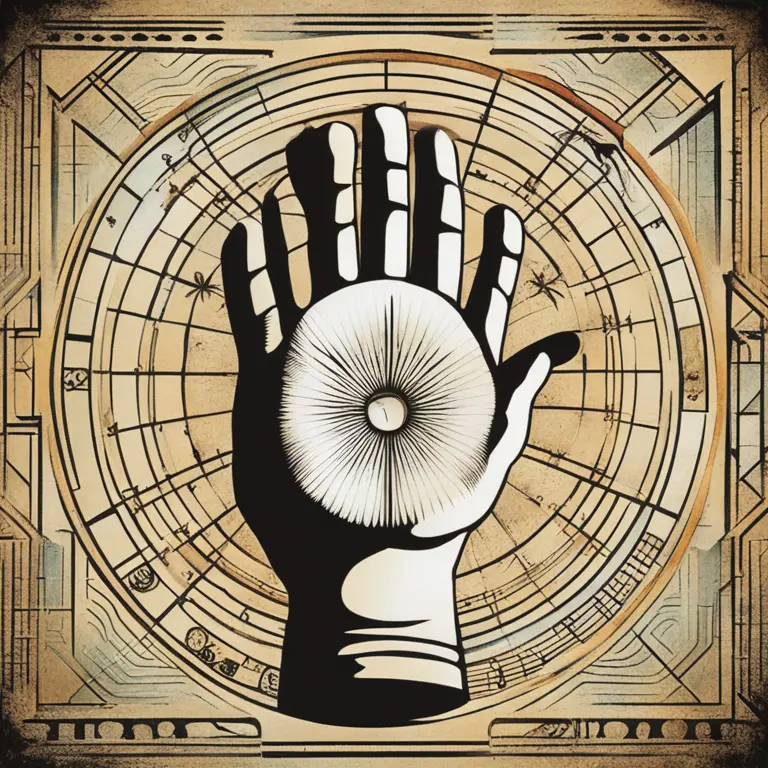
The Origin of Your Life Line: Right or Left Palm?
Discover which of your palms reveals the intriguing life line and what insights it holds about your life's journey and personality.
article by Nora Pennington
Introduction to Life Lines
Palmistry, or chiromancy, has been a source of fascination and curiosity for centuries. It is believed that within the contours of our hands lie the maps of our life stories. One of the key features in palmistry is the life line, a significant crease that many believe reflects one’s vitality, major life changes, and overall wellbeing. Traditionally, palmists examine both hands to interpret a person's past, present, and future, as well as their physical and emotional state. However, there's often confusion about whether the left or the right hand holds the key to our most defining characteristics.

The Dominant Hand's Tale
For accurate palm readings, palmists often start with the dominant hand—the one a person uses for writing and performing most tasks. The dominant hand is thought to show the life we have carved out through our actions and decisions. It reflects the experiences, changes, and lessons we have accumulated over time. Essentially, it is considered the dynamic blueprint of our personal history, the active manuscript that continuously unfolds through our choices and interactions with the world around us.

The Non-Dominant Hand: A Prequel
In contrast, the non-dominant hand is perceived as the starting point, the original script of our potential and inherited traits. This hand shows what we were born with, the raw materials and possibilities given to us. Some palmists view the non-dominant hand as a window into what might have been or what could be—it's the undercurrent of our essence, our capabilities, and sometimes even the challenges we face inherently. When looking for the life line, a palmist may refer to this hand to gain insights into a person’s natural disposition and innate qualities.

Reading the Life Line
The life line begins between the thumb and the index finger (also known as the Jupiter mount) and arcs down towards the wrist. This arc characterizes the richness of life's journey. A deep, clear life line suggests a robust and hearty constitution, while breaks and changes in the line can indicate significant life transformations or health challenges. Remember, though, that contrary to some myth, a short life line does not predict an early demise. Instead, it may hint at the need for greater resilience or a call to develop new coping strategies.

Interpreting Life Line Length and Depth
The length and depth of the life line, whether it appears on the left or right palm, are both relevant. A long, uninterrupted life line suggests stability and determination, while a short one may imply flexibility and an easy-going approach to life. Deep lines present strength and vitality, whereas faint lines could indicate a need for rest or that a person may easily tire. For those embarking on a journey of self-discovery, the study of both palms in tandem can offer a more nuanced understanding of the life line’s message.
Cultural Variations in Palmistry
It's important to acknowledge that interpretations of the life line—and palmistry in general—can vary significantly across different cultures and schools of thought. In some traditions, the right hand is read for women, while the left is read for men; in others, the opposite is true. Modern palmistry increasingly emphasizes the importance of looking at both hands for everyone, wherein both the passive traits (non-dominant hand) and active changes (dominant hand) are valuable for a comprehensive reading.
The Power of the Palms
Whether you're a skeptic or a believer in the art of palmistry, there's no denying the allure of discovering more about oneself through the lines etched on our palms. The life line, irrespective of the hand it is more pronounced on, provides intriguing perspectives on an individual's life path. As we continually seek to understand our place in the world, palmistry offers an introspective tool—one that can prompt reflection and often inspire a deeper awareness of our personal narratives.
Published: 1/11/2024
Modified: 1/12/2024
More predictions
Come back here soon to learn more about yourself and your future


Can Palmistry Predict Your Path Incorrectly?
Delving into the accuracy of palm readings, this article examines whether palmistry can lead to incorrect predictions about one's life and destiny.


Can Palmistry Foresee One’s Demise?
Delve into the contentious debate about whether palmistry can predict the end of life and the ethical considerations of such a claim.


Palmistry Basics: How to Read Your Hand's Secrets
Learn the basics of palmistry with this guide on how to read the lines and shapes of your hands to reveal insights about your personality and future.